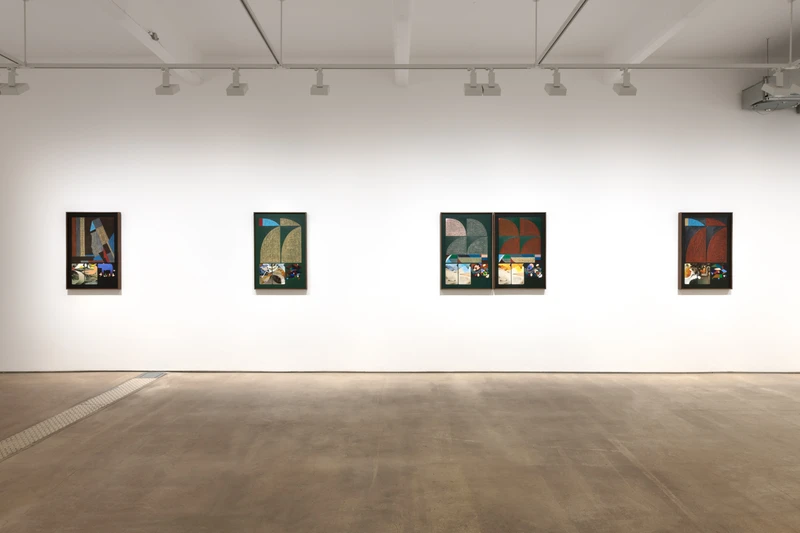Haroun Hayward: Event on the Downs
24 Mar-5 May 2023
PV 23 Mar 2023, 6-8pm


Hales is delighted to announce Event on the Downs, Haroun Hayward’s debut solo exhibition with the gallery.
Haroun Hayward (b. 1983, London) received a BA (Hons) in Fine Art Painting from University of Brighton and an MA in Fine Art Practice from Goldsmiths University, London. He lives and works in London.
Event on the Downs marks a consolidation of Hayward’s ideas over the past two years. The works are a celebration of hybridity, harmoniously converging art historical and musical references with distinct modes of making. The paintings honor what informs Hayward's personal and artistic narrative — rave culture, British landscape painting and his mother's textile collection.
The show’s title has a dual meaning, Event on the Downs being both the title of a Paul Nash painting and a nod to rave culture, referring to parties in the countryside. For Hayward there is a congenial link between bucolic landscapes and rave culture, characterized by a search for the transcendental. Striving in painting for the ecstasy found in raving, the structure of the works mirrors the repetitive rhythms of 80s and 90s house music. Repetition and remixing, to borrow from music terminology, are key to the artist's painting process. Hayward likens the variation of forms in his paintings to the practice of sampling in electronic music.
Hayward has developed a distinctive set of processes for handling each section of his works. Methodical in the making, Hayward starts with a gessoed wooden panel, painting the top half first. He applies a light layer of oil paint, smoothing over with a neutral tone before scratching with a sharp tool, revealing the colour below. He then intuitively punctuates areas with oil pastel. There is in an immediacy and freedom of expression in the abstract section, which Hayward describes as coming from the 'ether' — music made into visual form.
The bottom left part of each painting has two rectangles with cut out chevrons, in this area of painterly flourish Hayward reimagines works by British painters. For this exhibition Hayward has focused on paintings by Paul Nash, specifically works made after 1942 towards the end of his life. In this potent period Nash was concerned with the Wittenham Clumps, a view in Oxford that he repeatedly painted to show a mystical landscape rich in symbolism.
Emulating embroidery, the bottom right section is a textural patterning, informed by Hayward's mother's expansive textile collection. In these works, the textiles are drawn from Uzbeki and Cameroonian textile. Sculptural relief and intensity of colour is achieved by a painstaking process of remoulding an oil stick in order to apply the medium with a knife, creating ridged lines. Incredibly evocative of threads, the oil stick can be mistaken for fabric. In combining all these methods of making, Hayward explores multiple interplays of visual possibility in one united picture plane.
In two sets of eight watercolours, Hayward explores two works of art in depth — Birch Craig, Winter by Ben Nicholson and Entrance to a Lane by Graham Sutherland. Hayward began the watercolours on an artist residency in a rural part of England where he would walk the same path through the forest every day. The watercolours are about location and environment and transformative quality of changing light.
Resisting categorization, Hayward embraces an affinity to his diverse array of his influences to complete his symbiotic vision. The way Hayward thinks about painting and this show strongly resonates with this Paul Nash quote: “There are places just as there are people and objects and works of art, whose relationship of parts creates a mystery, an enchantment, which cannot be analysed.”